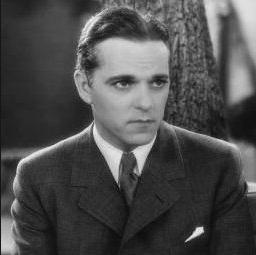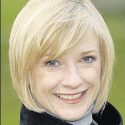Alexander Gray Death
Alexander passed away on October 4, 1976 at the age of 85 in Indio, California.
When did Alexander Gray die?
October 4, 1976How old was Alexander Gray when died?
85Where did Alexander Gray die? What was the location of death?
Indio, California
Alexander Gray Birthday and Date of Death
Alexander Gray was born on January 8, 1891 and died on October 4, 1976. Alexander was 85 years old at the time of death.
Birthday: January 8, 1891
Date of Death: October 4, 1976
Age at Death: 85
Alexander Gray - Biography
Alexander Gray called himself "a bashful man with a stutter." A native of Pennsylvania, Mr. Gray attended primary and grammar school in Baltimore, Maryland. His summers were spent milking his uncle's cows in Lancaster County, PA. No one would have dreamed that this cow-milking boy would become a recitalist, operetta star, Broadway actor, film actor and radio star. Gray showed an early liking of things mechanical and electrical. He first considered singing when he attended Pennsylvania State and sang in its Glee Club and enrolled in dramatic classes. Right after earning his credentials in industrial engineering, he worked his way to Europe as a deckman on the merchant steamer. Upon his return he taught carpentry and wood shop in a private boys' school, and for a time was on the editorial staff of "Iron Age," a trade publication. In Chicago he was an instructor at Northwestern Military and Naval Academy, but studied voice on the side. Opera diva Mme. Louise Homer heard him and she encouraged him to pursue his vocal career seriously. After he won a contest sponsored by the National Federation of Music Clubs, he was paid to sing recitals in different cities. After realizing that concert life was not very lucrative, he took a position as Manager of Advertising and Sales Promotion for the Diamond T. Truck Company of Chicago. During this time he kept up his singing at church.The longing to sing fully bloomed when Chamberlain Brown arranged an audition for Gray with producer Florenz Ziegfeld, Jr. and composer Gene Buck. They were preparing a new "Midnight Frolic" atop the New Amsterdam Theatre and Gray was engaged to do the singing. After the New York run, Ziegfeld sent out a road company of the "Frolic" headed by Will Rogers, which toured for a year during which time Gray became principal male singer. Then followed the "Ziegfeld Follies" and performances in "Sally" while it was on tour. In 1925 he co-starred in Oscar Straus' musical play "Naughty Riquette" with Stanley Lupino. This led to him playing the lead juvenile on "Tell Me More," with a score by the Gershwins. In 1925 he made his first recordings for Columbia Records. In the mid 1920s, the producers Schwab and Mandel sent for Gray to take the place of Robert Halliday as the Red Shadow in "The Desert Song," one of the most popular musical shows of the decade. He played the entire summer, and when Gray was cast in the Chicago company. Box office records were broken every where. In 1928 soprano Bernice Claire, who had played with Gray on the Albee Vaudeville Circuit, was the understudy for Vivienne Segal in "The Desert Song," and stepped into stardom. Claire and Gray toured in the show (Kansas City, Detroit, Philadelphia, and Chicago) for many seasons. When Jack Warner ordered a screen test of Alexander Gray, arrangements were made with the east coast Vitaphone Studios. Gray asked Bernice Claire if she would perform a duet with him for the test. Warners not only signed Gray to co-star with Marilyn Miller in "Sally," but they gave Bernice Claire leading roles in several musical films, three with Alexander Gray. They became the screen's first operetta team, predating Jeanette MacDonald & Nelson Eddy. While in Hollywood Mr. Gray was engaged to play the leads in complete 2-hour radio adaptations of "Blossom Time" and "The Chocolate Soldier," the latter with composer Oscar Straus conducting. When the vogue for all talking/singing/dancing films became threadbare, Mr. Gray returned to New York where, with his illustrious Hollywood credits, he achieved great success in operetta revivals, vaudeville and radio. Gray also continued his vocal studies with teacher Jean Teslof. Beginning in 1932 Mr. Gray appeared on the Chesterfield Radio Program for seven months, followed by six months of "Voice of America" sponsored by Underwood-Elliott-Fischer Company. In January 1934 Gray gave his first New York recital at The Town Hall. The New York Evening Journal wrote, "His broad experience in musical comedy and radio, together with his earnest study of the classics, gives him the immense advantage of knowing just how to 'sell himself' to his audience. He knows, in other words, what so many singers lack, the value of projecting the meaning of a song, so that it loses nothing when it slides over the edge of a concert stage. In diction, tone production and delivery he was master of the situation to the vast delight of a wildly enthusiastic audience." Following his triumph at The Town Hall, Gray was on the Chrysler Motors Radio Program for eight months. The rest of his career was spent singing in operettas, supper clubs and radio. In theatres across the country, he glided effortlessly between performances (some only 24 hours apart) of "Rose Marie," "The Chocolate Soldier," "Blossom Time" and "Rio Rita."








